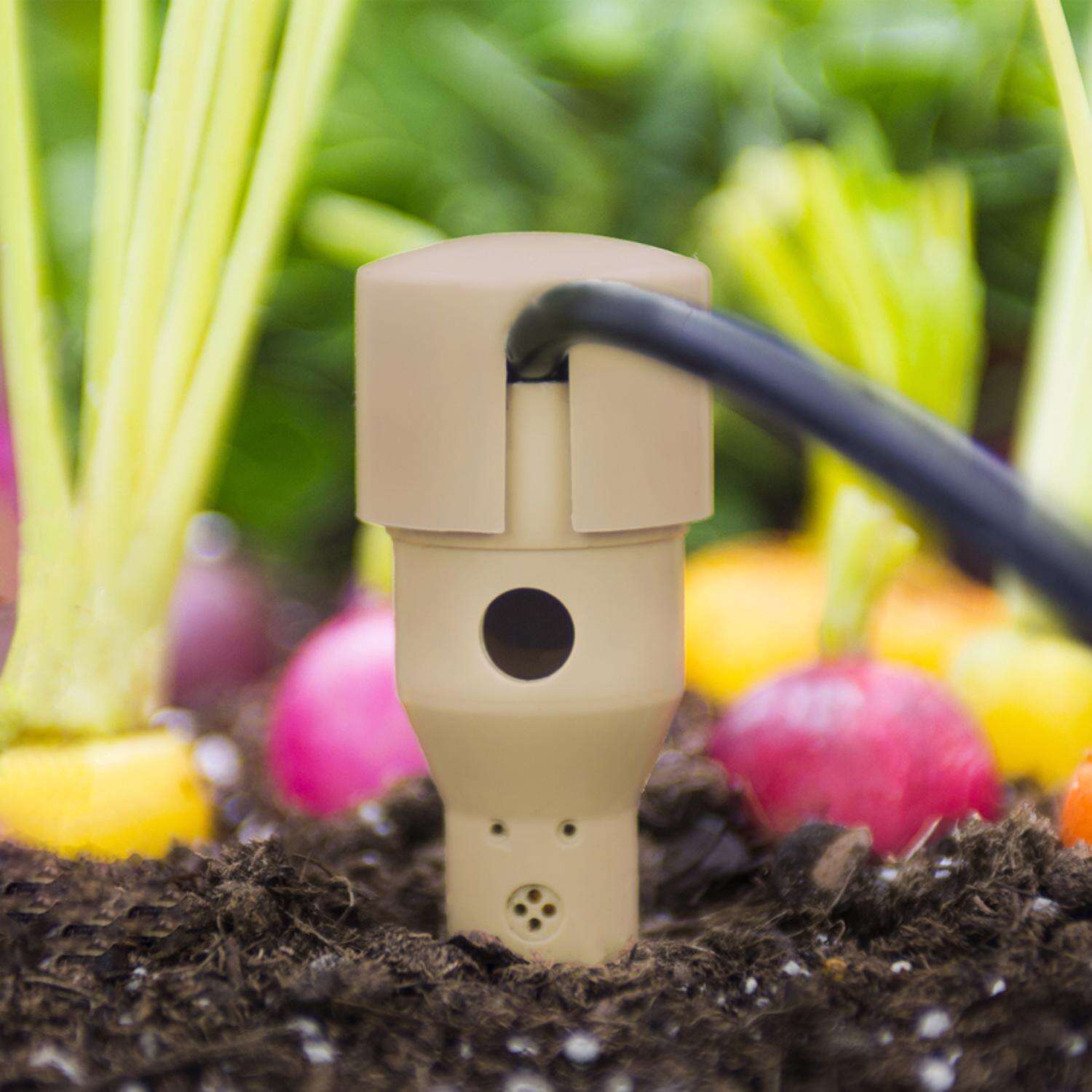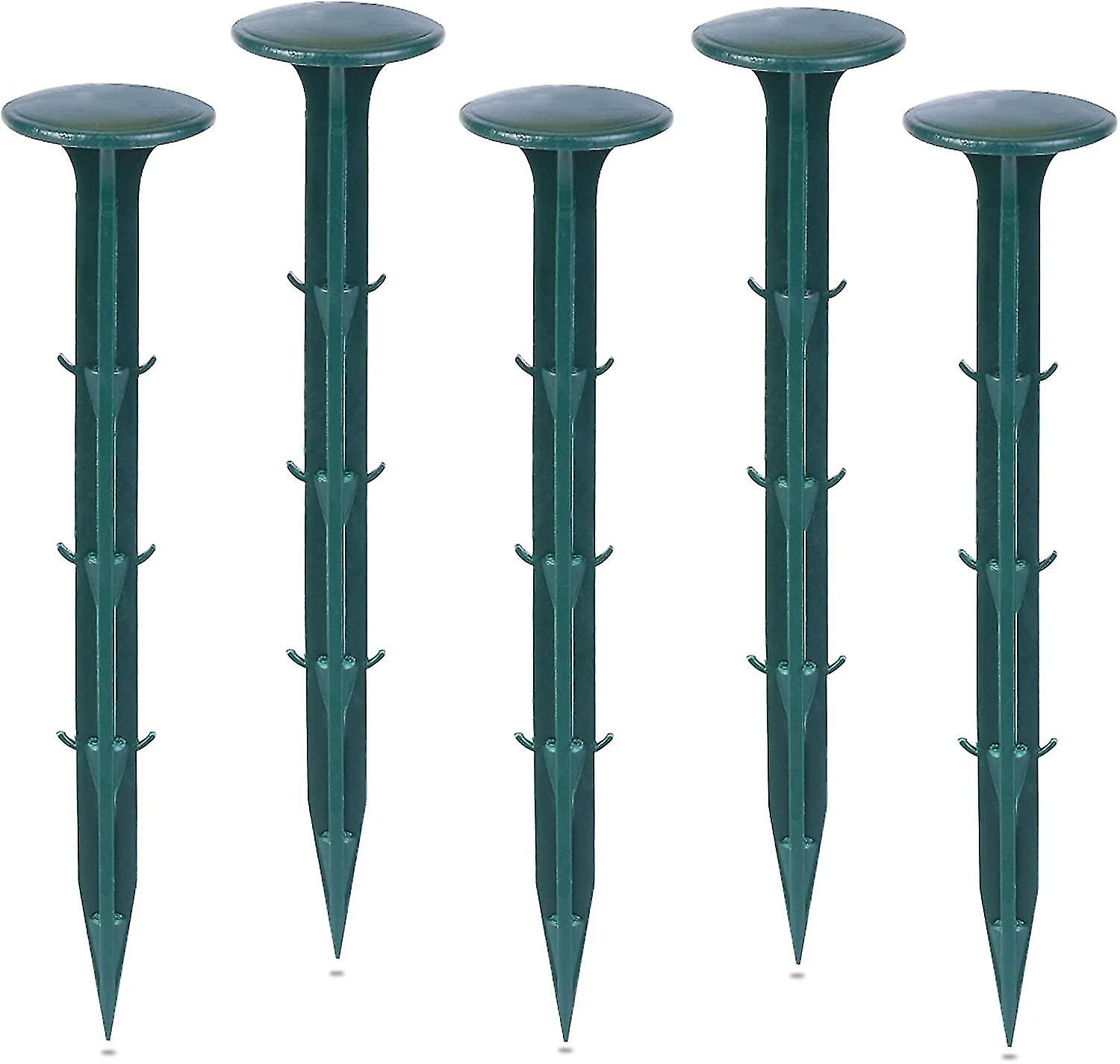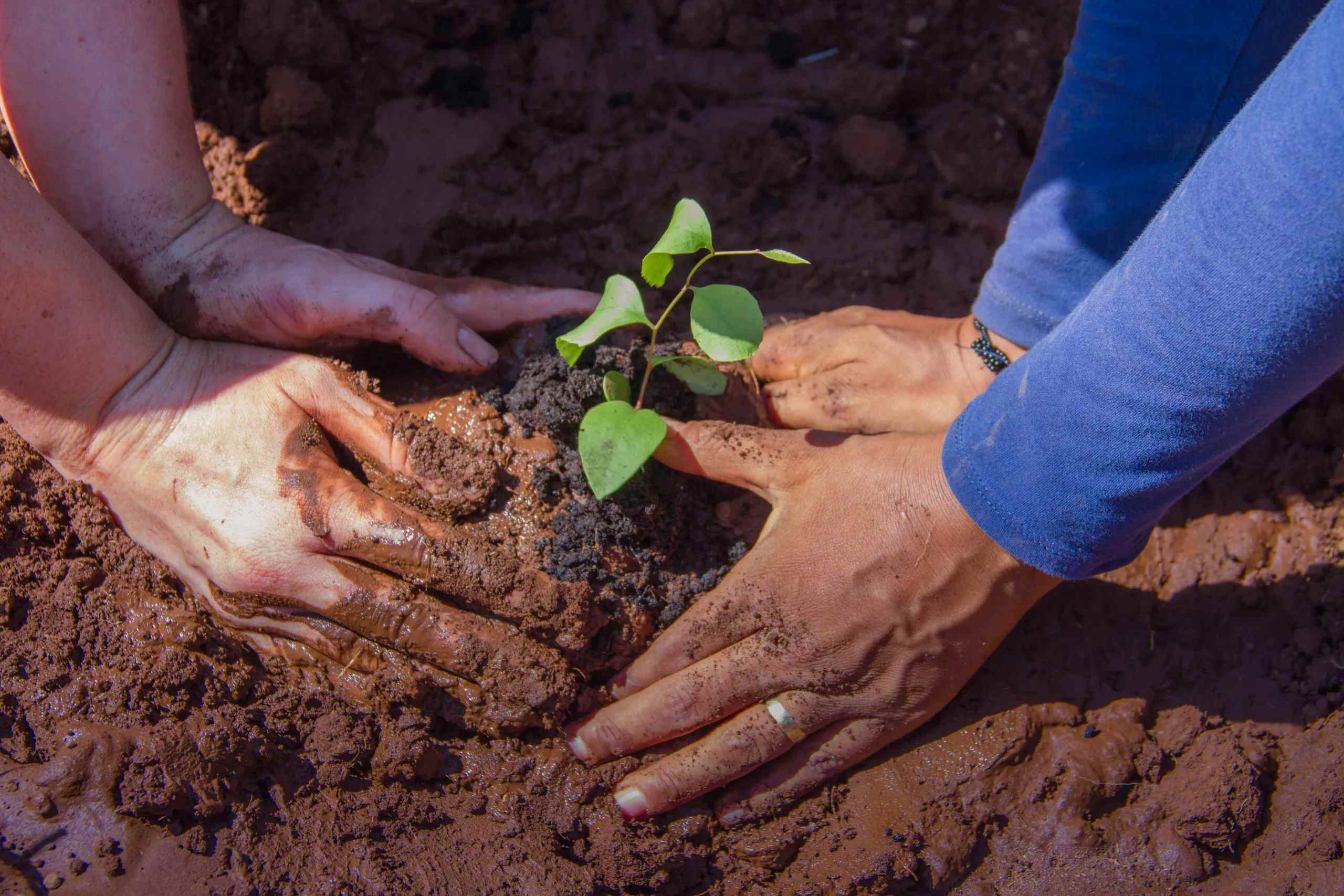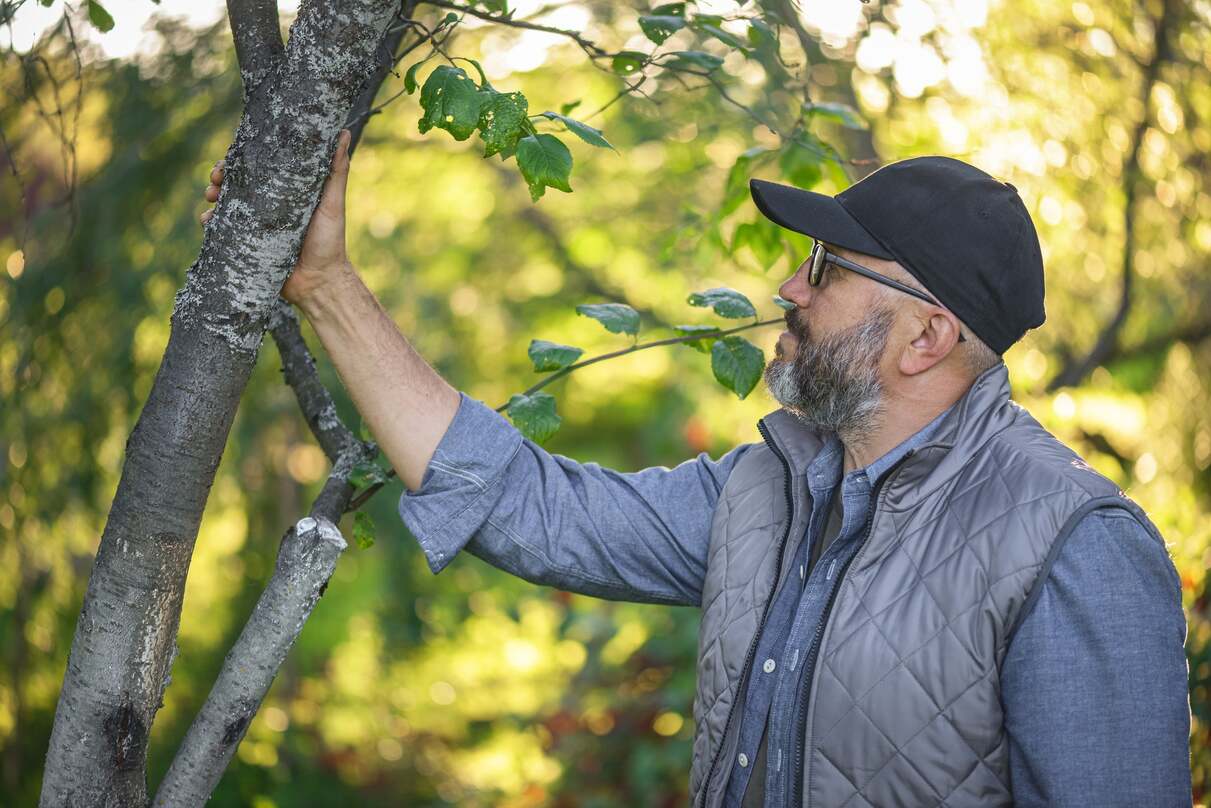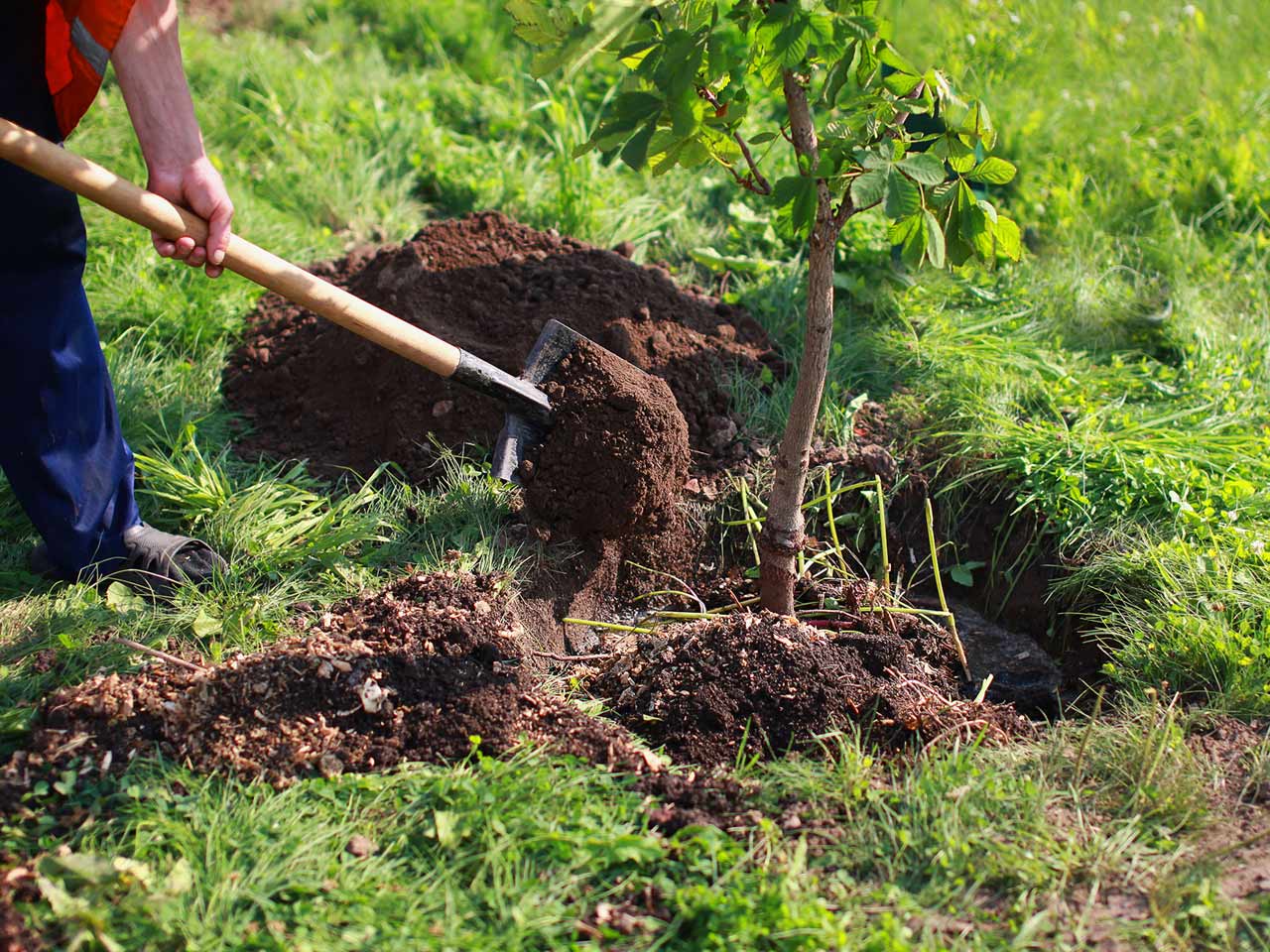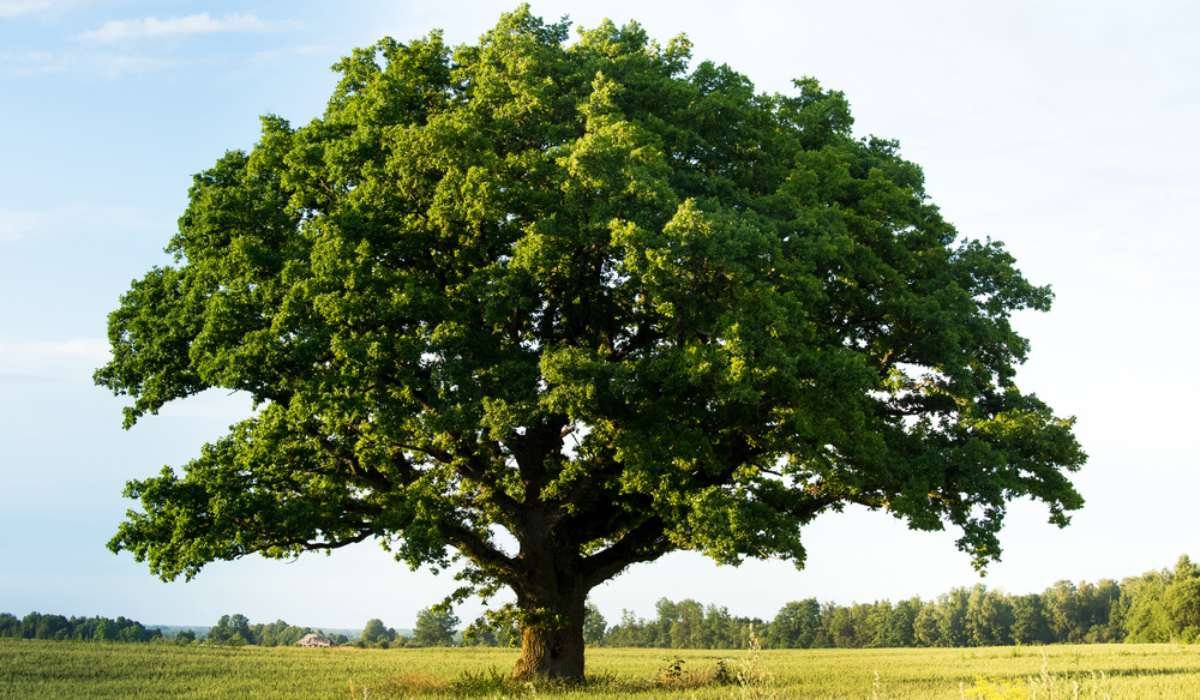Home>Gardening Techniques>Plant Care>How To Stake A Tree
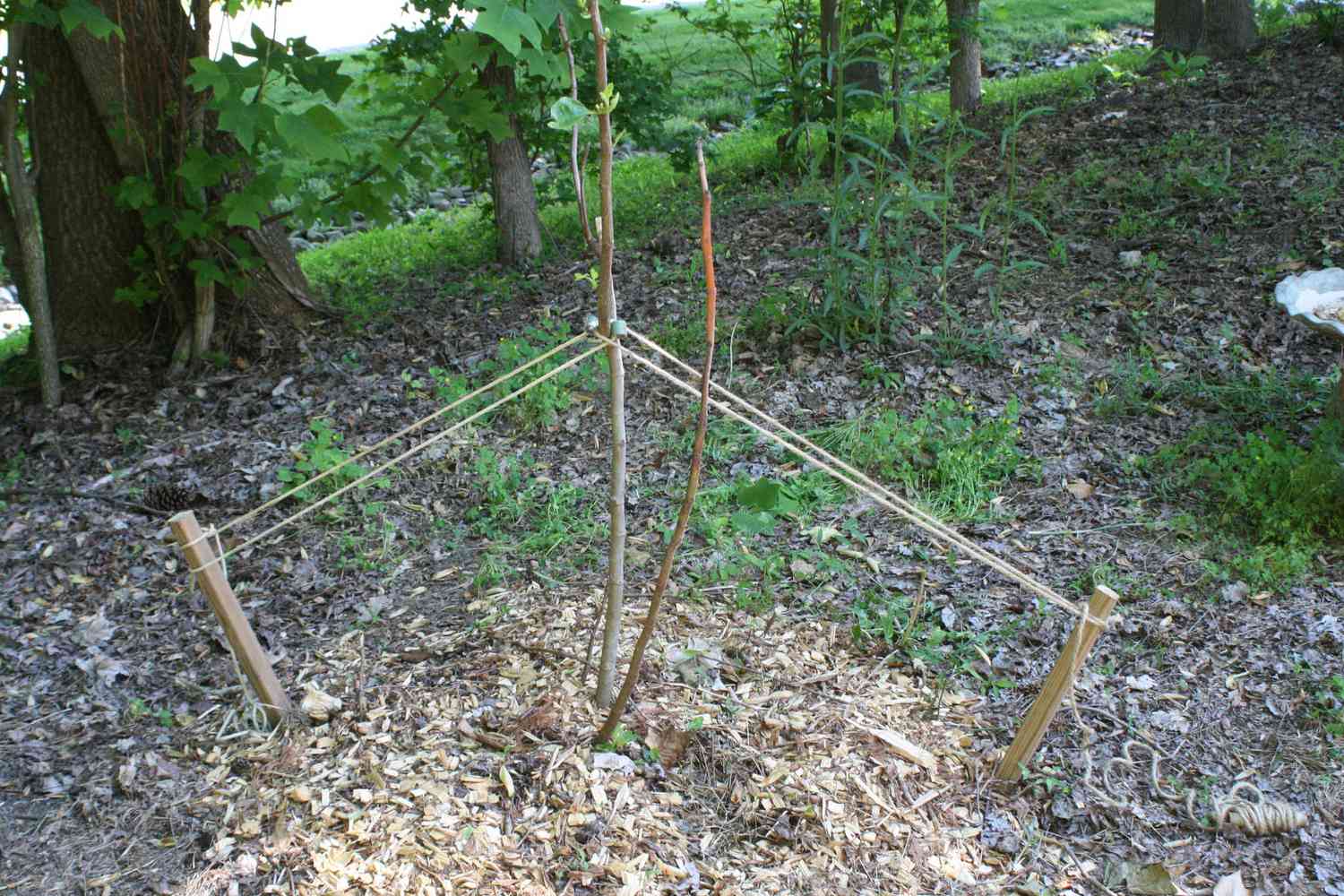

Plant Care
How To Stake A Tree
Published: November 13, 2023
Learn how to properly tie trees to stakes for optimal plant care. Our step-by-step guide will help you provide the necessary support and ensure healthy growth.
(Many of the links in this article redirect to a specific reviewed product. Your purchase of these products through affiliate links helps to generate commission for Chicagolandgardening.com, at no extra cost. Learn more)
Table of Contents
Introduction
Trees play a vital role in our environment, providing us with shade, clean air, and aesthetic beauty. However, young trees often require additional support to grow straight and sturdy. This is where tree staking comes into play. Tying trees to stakes can help protect them from strong wind gusts, animal damage, and promote proper alignment.
Tree staking involves securing a young tree to a stake using various materials such as rope, twine, or tree ties. By providing this additional support, you can ensure the tree’s stability and encourage healthy growth.
Choosing the right time to stake a tree is crucial. Generally, it is best to stake a tree shortly after planting or during the early stages of growth when the tree trunk is still flexible. Staking a tree can help prevent it from becoming permanently tilted or leaning due to external factors.
In this article, we will explore the reasons for tying trees to stakes, the types of materials needed for tree staking, and provide a step-by-step guide on how to properly tie trees to stakes. Additionally, we will share some helpful tips and common mistakes to avoid for achieving successful tree staking.
Whether you are an avid gardener, landscaper, or simply someone who wants to ensure the longevity and health of their trees, this comprehensive guide will help you master the art of tying trees to stakes.
Reasons for Tying Trees to Stakes
There are several reasons why staking trees is necessary, especially during the early stages of growth. Let’s explore some of the most common reasons:
- Wind Protection: Young trees have underdeveloped root systems, making them susceptible to being uprooted or damaged by strong winds. Tying a tree to a stake provides stability and prevents it from swaying excessively, reducing the risk of wind damage.
- Straight Growth: Without proper support, young trees may grow at an angle or become crooked. Tying a tree to a stake helps maintain an upright position, ensuring that it grows straight and tall.
- Preventing Damage: Tree staking can help protect the tree from potential damage caused by external factors such as animal activity, construction work, or accidental leaning from heavy equipment. The stake acts as a barrier, preventing unnecessary contact and minimizing the risk of injury.
- Establishing Root System: By securing a tree to a stake, you can encourage the development of a stable root system. This is particularly important in areas with loose soil or locations where the tree may experience soil erosion. The stake provides additional support, allowing the roots to anchor more effectively.
- Improved Branch Formation: Tying a tree to a stake can help guide the growth of branches and maintain an even canopy. This ensures proper distribution of sunlight and promotes healthy foliage development.
It’s important to note that while tree staking is beneficial, it should not be considered a long-term solution. Once the tree has become firmly established and the trunk has thickened, it is essential to remove the stakes and allow the tree to develop natural strength.
Now that we understand the reasons for tying trees to stakes, let’s explore the types of materials needed for tree staking in the next section.
Types of Materials Needed for Tree Staking
When it comes to tree staking, selecting the right materials is essential for ensuring proper support and stability. Here are some common materials you will need:
- Stakes: Stakes are vertical supports that anchor the tree to the ground. They are typically made of wood or metal and should be long enough to provide adequate support to the tree. Choose stakes that are sturdy and durable to withstand outdoor conditions.
- Ties: Ties are used to secure the tree to the stake. There are various options available, including tree straps, tree ties, and soft materials like rubber or cloth. Avoid using wire or materials that can damage the tree bark. The ties should be flexible enough to allow for tree growth but still provide sufficient stability.
- Protection Sleeves: Though optional, protective sleeves can be used to shield the tree trunk from rubbing against the stake or tie. These sleeves are typically made of a material like plastic or foam, providing a buffer between the tree and the support materials.
- Tools: You may require some basic tools to properly stake a tree, such as a hammer for driving the stakes into the ground, a measuring tape to ensure proper distance between the stake and tree, and a pair of pruning shears to trim any excess ties or branches.
It’s important to choose materials that are appropriate for the size and age of the tree. Younger trees may require lighter and less rigid stakes, while larger and more mature trees may need heavier and more robust materials for adequate support.
Before proceeding to stake your tree, ensure that you have all the necessary materials readily available. Taking the time to gather high-quality materials will contribute to the effectiveness and long-term success of your tree staking efforts.
Now that we have covered the types of materials needed, let’s move on to the step-by-step guide on how to tie trees to stakes.
Step-by-Step Guide on How to Tie Trees to Stakes
Properly staking a tree requires careful attention to detail and a systematic approach. Follow these steps to effectively tie trees to stakes:
- Choose the Right Position: Start by selecting the correct position for both the stake and the tree. Place the stake on the windward side of the tree, ideally about 1-2 feet away from the trunk. This will provide stability against strong winds.
- Drive the Stake Into the Ground: Use a hammer to drive the stake into the ground at least 1-2 feet deep. Ensure that the stake is firmly anchored and stable.
- Attach the Tree Tie: Carefully attach the tree tie to the stake. Begin by wrapping the tie around the trunk of the tree, about 1/3 of the way up from the base. Make sure the tie is snug but not too tight to allow for some movement.
- Secure the Tie to the Stake: Loop the tree tie around the stake, ensuring it crosses over itself to create a secure loop. Avoid tying the tie directly onto the stake, as this can damage the tree trunk or restrict growth.
- Adjust for Stability: Stand back and assess the stability of the tree and the tension of the tie. You want the tree to be upright and secure, but not overly constricted. Make any necessary adjustments to achieve the ideal balance.
- Check Regularly: Monitor the tree and the tie regularly, especially during the first few months. Adjust the tie if it becomes too tight or starts to cut into the bark. Also, ensure that the tie is not obstructing the growth of the tree.
- Remove the Stakes: Once the tree has become firmly established and can stand on its own, typically after 1-2 growing seasons, it’s time to remove the stakes. Carefully remove the ties and stakes, allowing the tree to develop its natural strength.
Remember, proper tree staking is crucial to the tree’s growth and health. Take your time and be gentle during the process to avoid causing any harm to the tree.
Now that you know how to tie trees to stakes, let’s move on to some helpful tips for ensuring a successful outcome.
Tips for Properly Tying Trees to Stakes
When it comes to properly tying trees to stakes, there are some important tips to keep in mind. These tips will help ensure the success and effectiveness of your tree staking efforts:
- Choose the right size stakes: Select stakes that are tall enough to provide adequate support to the tree. The height of the stake should allow the uppermost tie to be at or slightly above the midpoint of the tree trunk.
- Use flexible and non-abrasive ties: Opt for ties that are soft and flexible to prevent damage to the tree trunk. Materials like rubber or cloth are preferable over wire or plastic ties that can cut into the bark as the tree grows.
- Avoid tying too tightly: While you want the tie to be snug, avoid tying it too tightly. This can restrict the tree’s growth and cause damage. Allow some movement and flexibility to encourage natural development.
- Monitor tree growth: Regularly check the tree’s growth and adjust the ties if necessary. As the tree grows, you may need to loosen or reposition the ties to accommodate its increasing girth.
- Protect the trunk: Consider using protective sleeves or padding around the ties to prevent them from rubbing against the tree trunk. This will protect the bark and minimize any potential damage.
- Remove stakes when appropriate: Once the tree has established a strong root system and can stand on its own, remove the stakes to allow for natural growth. Leaving the stakes on for too long can hinder the tree’s strength and may lead to dependency on external support.
- Regularly inspect for pests or diseases: While staking the tree, take the opportunity to inspect the tree for any signs of pests or diseases. Early detection can help prevent further damage.
- Seek professional advice if needed: If you are uncertain about the best staking methods or have concerns about the tree’s health, it’s always a good idea to consult with a professional arborist or tree care specialist for guidance.
By following these tips, you can ensure that your tree staking endeavors result in healthy, strong, and vertical trees. Now, let’s address some common mistakes to avoid when tying trees to stakes.
Common Mistakes to Avoid When Tying Trees to Stakes
While tree staking is a helpful practice, there are some common mistakes that you should avoid to ensure the best outcome for your trees. Let’s take a look at these mistakes:
- Overly tight ties: Tying the tree too tightly to the stakes can constrict its growth and cause damage to the bark. It’s important to allow some movement and flexibility while still providing support.
- Improper tie placement: Placing the tie too close to the ground or too high up on the tree trunk can lead to instability. The ideal placement is about one-third of the way up from the base of the tree.
- Using abrasive materials: Avoid using materials that can rub against or cut into the tree trunk. Wire, plastic ties, or rough materials can damage the bark and hinder healthy growth.
- Leaving the stakes on for too long: Stakes should only be used until the tree has established a strong root system and can stand on its own. Leaving the stakes on for too long can lead to the tree becoming dependent on external support and may weaken its natural strength.
- Not checking and adjusting ties regularly: It’s important to regularly check the tree ties to ensure they are not too tight or causing any damage. As the tree grows, the ties may need to be adjusted or loosened to accommodate its expanding trunk.
- Skipping protective padding: Failing to use protective padding or sleeves around the ties can result in rubbing and damage to the tree trunk. These protective measures help minimize any potential harm.
- Using undersized or unstable stakes: Stakes should be tall enough and sturdy to provide proper support to the tree. Using undersized or unstable stakes can lead to inadequate support and may not effectively protect the tree from wind or other external factors.
- Ignoring signs of pests or diseases: While staking the tree, take the opportunity to inspect for any signs of pests or diseases. Ignoring these early warning signs can lead to further damage and affect the health of the tree.
By avoiding these common mistakes, you can ensure that your tree staking efforts are successful and contribute to the long-term health and growth of your trees.
Now that we have covered the common mistakes to avoid, let’s conclude this comprehensive guide to tying trees to stakes.
Conclusion
Tying trees to stakes is an essential practice to promote proper growth, stability, and protection for young trees. By providing additional support, you can safeguard trees from wind damage, promote straight growth, and establish a strong root system.
In this article, we explored the reasons for tying trees to stakes, the types of materials needed for effective tree staking, and provided a step-by-step guide on how to properly secure trees to stakes. We also shared valuable tips to ensure the success of your tree staking endeavors and highlighted common mistakes to avoid.
Remember, choosing the right size stakes, using flexible and non-abrasive ties, and monitoring tree growth are crucial aspects of proper tree staking. Additionally, removing stakes when appropriate and seeking professional advice when needed contribute to the overall success of this practice.
By following these guidelines and using your knowledge of plant care, you can foster healthy tree development and create an environment where trees can thrive. Embrace the joy of nurturing your trees, and enjoy the beauty they bring to your surroundings.
